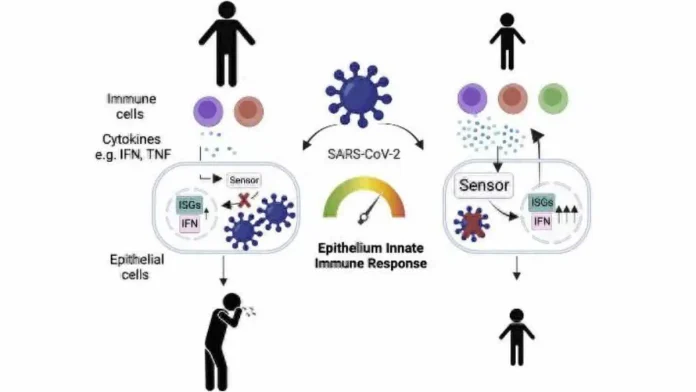During the ongoing battle against the SARS-CoV-2 pandemic, one of the striking observations has been the apparent resistance of children and adolescents to severe COVID-19 infection. Recent breakthroughs in scientific research, particularly from the German Cancer Research Center (DKFZ) and Charité – Universitätsmedizin Berlin’s Berlin Institute of Health (BIH), shed light on the compelling reasons behind this phenomenon.
1. Distinct Immune Vigilance in Children
Researchers at DKFZ have unearthed a fascinating aspect: prior to infection, children exhibit a heightened immune readiness in their upper respiratory tracts compared to adults. This readiness stems from the nasal mucosa of healthy children, which remains on constant ‘alert,’ showcasing higher immune cell density and increased secretion of pro-inflammatory cytokines.
Amidst the comparison with adults, it becomes evident that this active immune response in children’s upper respiratory systems serves as a shield against the severity of SARS-CoV-2 infections.
2. Age as a Critical Factor
Age is undeniably a prominent risk factor for the progression of severe COVID-19. The mortality rate drastically escalates with age, with the elderly facing a significantly higher risk of adverse outcomes. In contrast, children exhibit milder symptoms and shorter disease courses, showcasing a remarkable resilience against the virus.
3. The Nasal Mucosa’s Defensive Edge
Pioneering studies conducted by DKFZ and BIH in 2022 pinpointed the root of children’s enhanced defense mechanism against severe COVID-19 disease. Their research delved into the molecular underpinnings, revealing that the nasal epithelial cells of healthy children possess higher levels of induction proteins responsible for recognizing viral RNA genomes and activating an interferon response, enabling swift virus recognition and containment upon entry.
Furthermore, an in-depth analysis of the cellular composition of children’s nasal mucosa indicated a noticeable surge in immune cells compared to adults. Even in the absence of infection, these immune cells actively produce higher levels of pro-inflammatory cytokines, essential for fortifying the mucosal cells’ ability to combat viral intruders.
4. Understanding the Protective Mechanism
The findings underscore the inherent robust protective mechanism within children’s nasal mucosa, extending beyond just SARS-CoV-2 to potentially combat other respiratory viruses. However, amidst a pandemic where the novel coronavirus encounters all immune systems for the first time, this distinction becomes prominently evident. Adults, having developed immune memory from prior exposures to similar viruses, showcase a less pronounced effect of this robust defense mechanism.
DKFZ virologist Marco Binder elucidates, “SARS-CoV-2’s rapid replication within cells poses a significant challenge, especially in evading the cell’s virus alarm system. Hence, the innate protective mechanism observed in children assumes critical significance against this pathogen.”
5. Future Explorations and Strategies
Binder emphasizes the need for further investigations into preventive strategies against SARS-CoV-2 and similar respiratory infections. He proposes exploring approaches that mimic the cellular composition of children’s mucosal tissues, suggesting the inhalation of low-dose cytokine preparations as a potential avenue for research and development.
In conclusion, the discoveries made by these researchers highlight the remarkable resilience of children’s immune systems against severe SARS-CoV-2 infection. Understanding these mechanisms not only aids in combating the ongoing pandemic but also paves the way for innovative preventive strategies against future respiratory infections.
6. FAQs
While children exhibit less severe symptoms, they are not immune to the virus. They can still contract and transmit it.
Research suggests that mimicking certain elements of children’s immune responses might aid in developing preventive strategies, but complete replication remains uncertain.
Though many children display milder symptoms, the severity can vary among individuals.
While promising, developing a universal vaccine requires extensive research and validation to ensure safety and effectiveness across different age groups.
Insights into children’s immune responses may guide the development of targeted therapies or preventive measures for severe COVID-19 cases.

